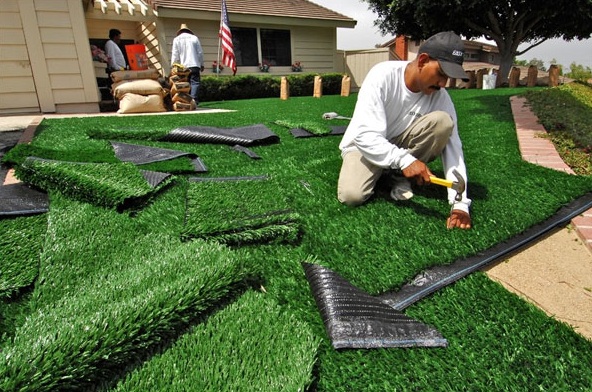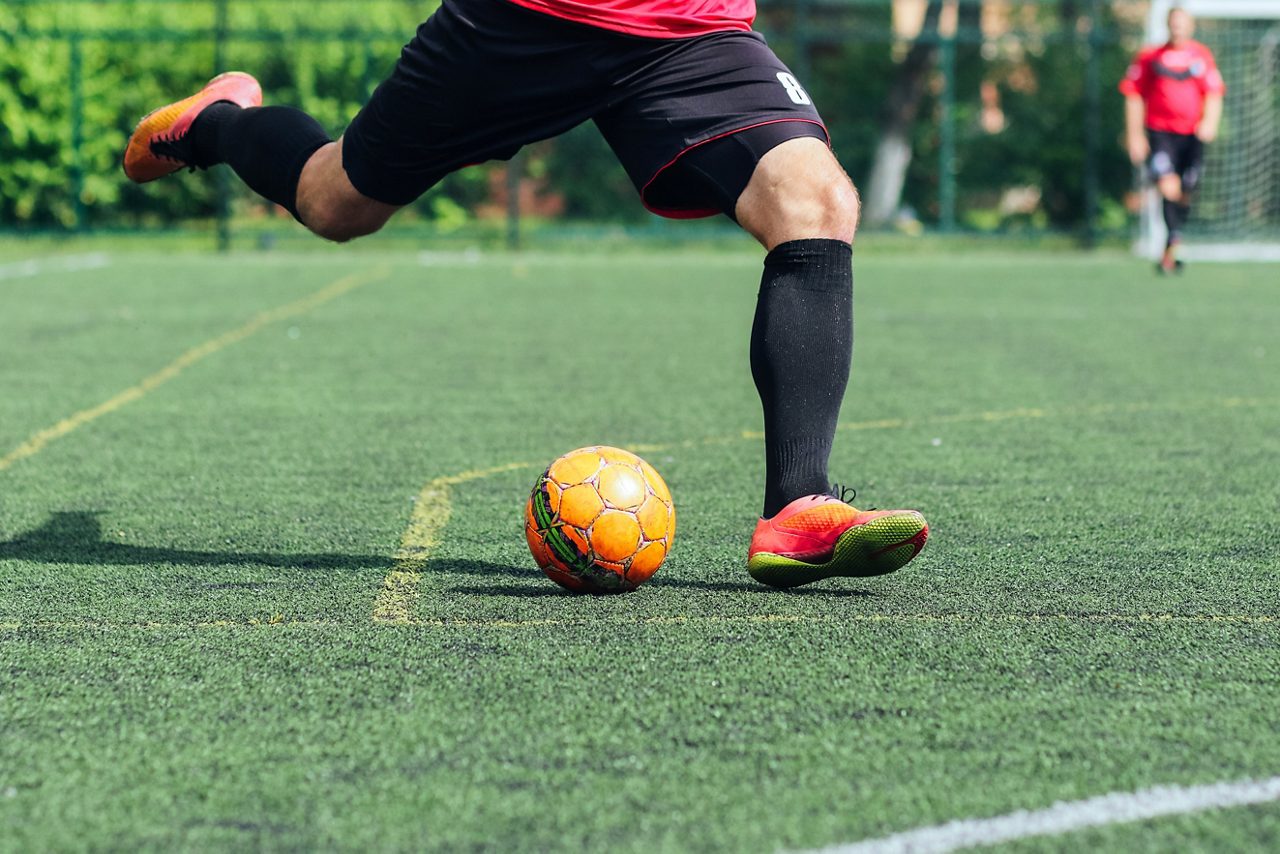Skilled Arizona Turf Installation Services for Residential and Business Use
Skilled Arizona Turf Installation Services for Residential and Business Use
Blog Article
Explore the Environmental Perks of Opting for Artificial Lawn Solutions
The fostering of synthetic grass remedies provides a compelling chance to deal with pushing ecological challenges. By significantly reducing water use and lessening the application of damaging chemicals, these choices not just promote lasting landscaping but also secure regional ecosystems. In addition, the lower carbon impact connected with lowered maintenance tasks contributes to an extra sustainable technique to land management. Nevertheless, the implications of these benefits expand beyond simple preservation efforts, questioning regarding their lasting effect on habitat conservation and overall environmental equilibrium. Discovering these dimensions reveals a complicated interaction worth taking into consideration.
Water Preservation Advantages
Among one of the most substantial benefits of fabricated lawn is its capacity to preserve water. Standard lawn lawns need substantial irrigation, especially in locations vulnerable to dry spell or water limitations. On the other hand, synthetic turf does not require watering, significantly lowering the total need for water resources. This feature is specifically beneficial in deserts where water scarcity is a pushing problem.
By eliminating the demand for regular watering, synthetic grass adds to sustainable landscape methods and aids alleviate the ecological impact of too much water consumption. Additionally, the conservation of water includes the reduction of overflow, which can lead to soil erosion and river contamination.
Additionally, the setup of fabricated turf enables house owners and districts to assign water resources a lot more successfully, concentrating on crucial uses such as drinking water and agriculture. The change in the direction of artificial turf not only promotes accountable water usage however additionally straightens with broader environmental goals targeted at protecting natural deposits.
As neighborhoods progressively focus on sustainability, the water preservation advantages of synthetic grass offer an engaging instance for its fostering in household and business landscape design jobs.
Minimized Chemical Use
The shift to man-made grass substantially reduces the reliance on chemical treatments typically used in natural grass maintenance. Traditional turf administration generally includes the application of herbicides, fertilizers, and chemicals to promote growth and control parasites. These chemicals can present threats to human wellness, neighborhood wildlife, and the environment, adding to soil and water contamination.
On the other hand, artificial lawn gets rid of the requirement for these unsafe compounds. Once installed, it calls for marginal maintenance, mainly consisting of normal cleaning and irregular infill replenishment. This reduction in chemical use not only profits the prompt atmosphere but additionally contributes to broader ecological security. By reducing the launch of synthetic substances right into the community, artificial grass promotes much healthier soil and water supply.
Additionally, the lack of chemical overflow connected with synthetic grass installments assists safeguard regional rivers from contamination, supporting marine life and keeping biodiversity. Arizona turf. As communities significantly prioritize lasting methods, selecting synthetic grass presents a sensible option that straightens with environmental conservation objectives. Via this shift, homeowner can appreciate lavish green rooms without endangering environmental wellness, leading the way for an extra sustainable future
Lower Carbon Impact

In Website addition, the installation of synthetic grass can result in substantial water preservation. All-natural yards need considerable amounts of water for irrigation, which not only includes in the carbon impact related to water extraction and treatment however likewise pressures regional water sources. On the other hand, synthetic grass needs minimal upkeep, calling for no watering, consequently significantly reducing water usage and its linked power prices.
Additionally, the durability of fabricated turf contributes to its reduced carbon impact. With a lifespan of approximately 15 years or even more, the need for constant replacements is lessened, resulting in much less waste and reduced power usage in manufacturing and dealing with conventional turf alternatives. On the whole, artificial grass offers a lasting alternative for environmentally aware landscape design.
Environment Preservation
Environment preservation is a vital consideration in the dispute over landscape design options, particularly when comparing synthetic grass to natural turf. All-natural turf yards often require comprehensive upkeep, consisting of making use of pesticides, herbicides, and plant foods, which can adversely impact local environments. These chemicals can leach right into the soil and waterways, hurting native plants and animals and interrupting neighborhood habitats.
On the other hand, synthetic grass presents a possibility to reduce the ecological impact of landscape design. By choosing artificial turf, homeowners can lessen the disruption of natural environments related to standard lawn care practices. Man-made lawn gets rid of the demand for dangerous chemicals, thereby securing nearby wildlife and preserving the honesty of bordering ecological communities. Additionally, the installment of man-made turf can cause the conversion of previous grass locations into more biodiverse landscapes, such as pollinator gardens or indigenous plant areas, which can support local wildlife.
Ultimately, the transition to synthetic grass not only conserves water and decreases maintenance initiatives but also cultivates an extra unified connection between human tasks and the natural surroundings, promoting habitat conservation in the procedure.
Long-Term Sustainability
Long-lasting sustainability is a critical consider reviewing the benefits of synthetic turf over traditional yard yards. One of one of the most substantial benefits of synthetic grass is its toughness; it can last as much as 15-20 years with minimal upkeep, whereas natural grass needs frequent reseeding and substitute. This durability reduces the requirement for constant sources, such as water, fertilizers, and chemicals, which are vital for maintaining a healthy and balanced grass yard.
Additionally, fabricated grass adds to a decrease in carbon emissions connected with yard treatment equipment. Typical lawns usually need gas-powered lawn mowers, trimmers, and blowers, every one of which add to air pollution. Arizona artificial turf. In contrast, synthetic grass gets rid of the demand for such equipment, promoting a cleaner setting
Moreover, the production of fabricated turf progressively makes use of recycled materials, improving its sustainability account. As manufacturers embrace eco-friendly methods, the ecological impact of synthetic grass continues to decrease.

Final Thought
The fostering of synthetic grass remedies provides significant ecological advantages, consisting of substantial water preservation, decreased dependence on damaging chemicals, and a reduced carbon footprint. Artificial lawn help in protecting natural environments by reducing land disruption and advertising lasting sustainability with the use of durable products. Jointly, these elements emphasize the potential of Clicking Here synthetic lawn to contribute positively to environmental wellness and offer a feasible alternative to conventional landscape design techniques in a progressively resource-conscious globe.
In comparison, artificial turf does not need watering, dramatically lowering the total demand for water resources. By reducing the launch of artificial substances right into the ecosystem, synthetic grass advertises much healthier dirt and water systems.
In addition, the installment of artificial turf can result in substantial water conservation. In comparison, man-made lawn requires marginal upkeep, calling for no watering, therefore dramatically reducing water use and its associated power prices.

Report this page